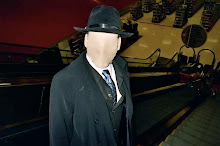In chapter 17 it talks about 3 different types of communication in decision making groups:promotive, disruptive, and counteractive. At work when a certain problem arises, we try to handle it as soon as we can. But if it is a problem that we have to discuss with a higher ranked person, it takes a little more time than that. Using the four functions of effective decision making, we identify the problem and ask ourselves what we can do to fix it and what others can do to fix it. If we can't agree on a solution we try and think of something else. If we decide on something and receive support on it, we then find out if the solution will work. For example, I work in a department store and part of the team of employees who work the night's goals is to make the store nice and neat to the way it was before we opened when we close. Because they were originally assigned one person to a department, the departments in the store were looking trashed and hard to manage. Now, occasionally, they created something called the "wave" which consists of half of the employees on the salesfloor going to one department at a time, at a certain time of the night, and fixing the department as a team. It seems to work on most nights but sometimes it doesn't.
I guess it helps to have a backup plan when the plan intended doesn't go right. Now, in some departments, there are 1-3 people at a time in a certain department and then they alternate and go to other departments to help out. It really helps if the people you work with are actually helpful to the cause and aren't disruptive to the goal at hand, in other words lazy.
